



Table of Contents
- Introduction
- What are Residential Plots?
- Key Points about Residential Plots
- Types of Residential Plots in India
- What are Commercial Plots?
- Key Points about Commercial Plots
- Types of Commercial Plots in India
- What are Agricultural Plots?
- Key Points about Agriculture Plots
- What are Industrial Plots?
- Key Points about Industrial Plots
- Types of Industrial Plots in India
- What are Institutional Plots?
- Key Points about Institutional Plots
- Types of Institutional Plots in India
- What is Brownfield Land?
- Key Points about Brownfield Land
- What is a Development Property?
- Key Points about Development Properties
- What is a Land?
- Key Points about Land
- What are Apartments?
- Key Points about Apartments
- What is a Builder Floor?
- Key Points about Builder Floors
- What is a Villa?
- Key Points about Villas
- What is Commercial Land?
- Key Points about Commercial Lands
- Conclusion
- Faq's
Introduction
India offers a diverse range of housing plots tailored to meet various lifestyle preferences, budgets, and needs. From independent residential plots for personalized homes to high-rise apartments for modern urban living, and from luxury villa plots to affordable housing options, the Indian real estate market caters to a wide spectrum of homebuyers and investors. Let's explore the types of housing plots available across different segments and locations, reflecting India's vibrant and dynamic housing landscape.
What are Residential Plots?
Residential plots refer to parcels of land that are specifically designated for residential purposes, meaning they are intended for the construction of houses, apartments, or other types of dwellings where people live. These plots are part of land development plans that allocate certain areas or zones for residential use within cities, towns, or housing communities.
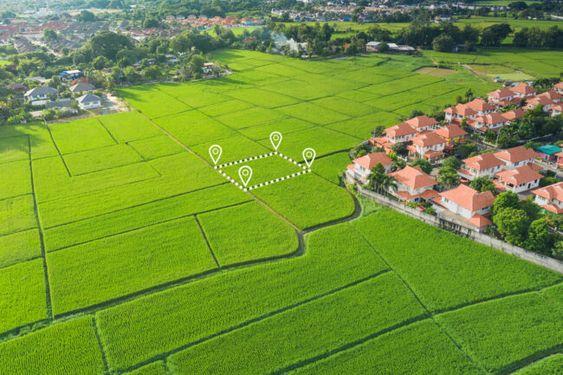 Residential Plot
Residential Plot
Image Source: Pinterest
Key Points about Residential Plots
1. Purpose: The primary purpose of residential plots is to provide space for housing units. This can range from single-family homes on individual plots to multi-family housing such as apartments or townhouses in planned developments.
2. Location: Residential plots are typically located within residential zones or areas earmarked for housing development. They may be part of larger housing projects, gated communities, or standalone plots within established neighborhoods.
3. Size and Shape: Residential plots come in various sizes and shapes depending on the specific zoning regulations, land availability, and planned density of housing in the area. Common sizes include small plots for individual homes and larger plots for multi-family or group housing.
4. Ownership: Residential plots can be owned by individuals, families, real estate developers, or housing societies. Ownership can be in the form of freehold (full ownership rights) or leasehold (land leased from a government or private entity for a specified period).
5. Infrastructure: When developing residential plots, infrastructure considerations such as roads, water supply, sewage systems, electricity connections, and other amenities are important factors. Access to transportation, schools, healthcare facilities, and shopping centers also contributes to the attractiveness of residential plots.
6. Regulations: Development on residential plots is subject to local building codes, zoning laws, land use regulations, and environmental guidelines. These regulations dictate aspects such as setbacks, building height, permissible land use, parking requirements, and green spaces.
7. Market Considerations: The value of residential plots is influenced by factors such as location, proximity to urban amenities, infrastructure development in the area, demand for housing, and overall economic conditions. Residential plots in prime locations or rapidly developing areas may command higher prices.
8. Residential Communities: Residential plots are often part of larger residential communities or housing projects that offer shared amenities such as parks, playgrounds, community centers, security services, and maintenance facilities. These communities contribute to a quality living environment for residents.
Types of Residential Plots in India
|
Type of Residential Plot |
Description |
|
Independent Residential Plots |
Intended for constructing individual houses or bungalows, offering privacy and customization options. Located in residential neighborhoods or suburban areas. |
|
Group Housing Plots |
Designated for multi-family dwellings like apartments, condominiums, or townhouses within larger housing projects. Often include shared amenities. |
|
Affordable Housing Plots |
Reserved for affordable housing projects targeting lower and middle-income segments, part of government or private initiatives focusing on affordability. |
|
Luxury Villa Plots |
Larger parcels for high-end villas/bungalows, often in upscale areas with additional amenities like private gardens, pools, and gated access. |
|
Farmhouse Plots |
Larger land parcels in rural/semi-rural areas for building farm houses or weekend retreats, offering a natural and serene environment away from cities. |
|
Gated Community Plots |
Part of gated communities with secure living environments, amenities like security services, clubhouses, and recreational facilities for residents. |
|
Integrated Township Plots |
Plots within large-scale integrated developments combining residential, commercial, and recreational spaces with schools, hospitals, and shopping centers. |
What are Commercial Plots?
Commercial plots are designated parcels of land that are intended for commercial activities and business operations. These plots are distinct from residential or industrial land and are specifically zoned and allocated for commercial purposes within urban or suburban areas.
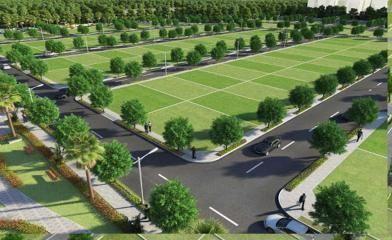 Commercial Plot
Commercial Plot
Image Source: Pinterest
Key Points about Commercial Plots
1. Purpose: The primary purpose of commercial plots is to serve as locations for businesses, offices, retail outlets, hotels, restaurants, entertainment venues, and other commercial ventures. They provide space for economic activities that cater to consumers, clients, and stakeholders.
2. Location: Commercial plots are strategically located in areas with high commercial potential, visibility, accessibility, and customer traffic. They are often situated along main roads, near transportation hubs, in commercial districts, or within mixed-use developments.
3. Zoning and Regulations: Commercial plots are subject to specific zoning regulations, land use policies, and building codes established by local authorities. These regulations govern aspects such as allowable land use, building height and density, parking requirements, signage, environmental standards, and other factors related to commercial development.
4. Ownership and Development: Commercial plots can be owned outright (freehold) or leased from government bodies or private entities (leasehold). Owners or developers of commercial plots undertake various development activities, including site planning, construction of commercial buildings or structures, installation of infrastructure (roads, utilities), landscaping, and provision of amenities necessary for commercial operations.
5. Infrastructure and Amenities: Developing commercial plots requires essential infrastructure such as roads, water supply, electricity, sewage systems, telecommunications, and internet connectivity. Depending on the type and scale of commercial development, additional amenities such as parking facilities, security systems, elevators, HVAC (heating, ventilation, air conditioning), and fire safety measures may be required.
6. Economic Impact: Commercial plots play a crucial role in driving economic growth, employment opportunities, and business expansion. They contribute to the vibrancy of urban areas, attract investment, foster entrepreneurship, and enhance the overall commercial ecosystem within a region.
7. Investment and Business Opportunities: Commercial plots offer investment opportunities for individuals, developers, and businesses looking to establish or expand their commercial presence. They can generate rental income, capital appreciation, and business revenue depending on the market demand, location attractiveness, and economic factors.
Types of Commercial Plots in India
|
Type of Commercial Plot |
Description |
|
Retail Plots |
Designated for retail businesses like shops, supermarkets, malls, etc., strategically located for customer traffic. |
|
Office Plots |
Meant for commercial office spaces and corporate buildings, located in business districts or commercial complexes. |
|
Hospitality and Tourism Plots |
Designed for hotels, resorts, restaurants, and tourism-related businesses, often in tourist destinations or commercial areas. |
|
Commercial Land for Mixed-Use Developments |
Combines retail, office, residential, entertainment, and recreational uses within a single development. |
|
Industrial and Warehousing Plots |
For industrial activities, manufacturing, logistics, warehousing, and distribution centers, catering to various industries. |
|
Special Economic Zone (SEZ) Plots |
Promote export-oriented industries and offer incentives such as tax benefits and streamlined regulations. |
|
Commercial Plots in Business Districts |
Located in prime commercial areas with high visibility and connectivity, catering to a mix of businesses. |
|
Technology Parks and IT/ITES Plots |
Designated for IT companies, software firms, tech startups, BPOs, and IT-enabled services, providing infrastructure support. |
|
Healthcare and Education Plots |
For healthcare facilities like hospitals and clinics, as well as educational institutions such as schools and colleges. |
|
Commercial Land for Development |
Undeveloped or partially developed land for future commercial projects, based on market demand and feasibility. |
What are Agricultural Plots?
Agricultural plots in India refer to land parcels specifically designated and used for agricultural purposes, such as cultivation of crops, farming activities, animal husbandry, horticulture, and related agricultural practices.
 Agricultural Plot
Agricultural Plot
Image Source: Pinterest
Key Points about Agriculture Plots
1. Land Use:
Agricultural plots are primarily used for agricultural activities such as growing food crops (like grains, vegetables, fruits), cash crops (such as cotton, sugarcane, tea), fodder crops (for livestock), medicinal plants, and other agricultural produce. They may also be used for activities like poultry farming, dairy farming, aquaculture, or sericulture.
2. Location:
Agricultural plots are typically located in rural areas, agricultural zones, or regions designated for agricultural use. These areas are conducive to farming due to factors like fertile soil, suitable climate, availability of water sources (such as rivers, lakes, or wells), and access to irrigation facilities.
3. Size and Ownership:
Agricultural plots can vary widely in size, ranging from small family-owned farms to large agricultural estates or plantations. They may be owned by individual farmers, agricultural cooperatives, government institutions, or private agribusiness entities. Ownership may be in the form of freehold (outright ownership) or leasehold (leased from government or private entities).
4. Infrastructure and Facilities:
Agricultural plots may have infrastructure such as farmhouses, barns, storage facilities (like godowns), irrigation systems (such as wells, pumps, drip irrigation), fencing, livestock shelters, and agricultural machinery or equipment (tractors, harvesters, etc.). Access to roads, markets, agricultural extension services, and financial institutions is also important for agricultural operations.
5. Regulations and Subsidies:
Agriculture in India is regulated by agricultural policies, land use laws, and government schemes aimed at supporting farmers, promoting sustainable agriculture, improving productivity, providing subsidies (like subsidies on seeds, fertilizers, and irrigation), and ensuring food security.
6. Challenges and Opportunities:
Agricultural plots face challenges such as water scarcity, soil degradation, pest infestations, market fluctuations, and access to modern technologies. However, they also present opportunities for agribusiness, food processing industries, agricultural exports, rural development, and employment generation.
7. Diversification and Modernization:
With changing agricultural practices and technologies, there is a trend towards diversification into high-value crops, organic farming, agro-processing industries, contract farming, and use of agri-tech solutions for improved productivity and sustainability.
What are Industrial Plots?
Industrial plots in India refer to designated land areas specifically allocated for industrial and manufacturing activities. These plots are crucial for the establishment of factories, production units, warehouses, logistics centers, and other industrial operations.
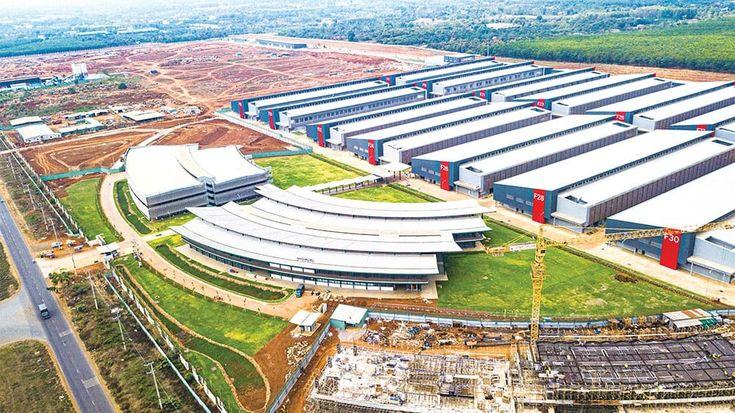 Industrial Plot
Industrial Plot
Image Source: Pinterest
Key Points about Industrial Plots
1. Purpose:
Industrial plots are primarily intended for industrial and manufacturing purposes, including production, processing, assembly, storage, and distribution of goods. They support various industries such as manufacturing, textiles, automotive, electronics, pharmaceuticals, chemicals, food processing, and engineering.
2. Location:
Industrial plots in India are typically located in industrial zones, industrial parks, special economic zones (SEZs), industrial estates, or designated industrial areas within cities and towns. These locations are chosen for their proximity to transportation networks (roads, railways, ports), availability of utilities (electricity, water, waste management), and compatibility with industrial activities.
3. Size and Layout:
Industrial plots vary in size depending on the scale of industrial operations they are intended for. They range from small plots suitable for individual factories or workshops to larger plots accommodating industrial estates or clusters hosting multiple industries. The layout of industrial plots considers factors such as access roads, utilities, zoning requirements, and future expansion possibilities.
4. Zoning and Regulations:
Industrial plots in India are subject to zoning laws, land use regulations, environmental norms, and building codes set by local authorities, state governments, and industrial development corporations. These regulations ensure compliance with safety standards, pollution control measures, land use planning, and industry-specific requirements.
5. Infrastructure:
Industrial plots require infrastructure such as industrial sheds, manufacturing units, warehouses, administrative offices, loading docks, parking areas, and utility connections (electricity, water supply, drainage, telecommunications). Some industrial plots may also include specialized infrastructure for specific industries, such as heavy machinery, production equipment, or research laboratories.
6. Accessibility and Connectivity:
Industrial plots are strategically located for easy accessibility to transportation networks, including roadways, highways, railways, and ports. Proximity to airports, logistics hubs, and major markets enhances connectivity and facilitates the movement of raw materials, finished products, and personnel.
7. Government Initiatives and Incentives:
The Indian government promotes industrial development through initiatives such as "Make in India," "Invest India," and various state-specific industrial policies. Industrial plots may benefit from incentives, subsidies, tax breaks, infrastructure support, and streamlined regulatory processes to encourage investments, job creation, and economic growth in the industrial sector.
8. Employment and Economic Impact:
Industrial plots contribute significantly to job creation, skill development, technology transfer, exports, value addition, and overall economic development. They play a vital role in industrialization, sectoral growth, and enhancing the competitiveness of Indian industries in domestic and global markets.
Types of Industrial Plots in India
|
Type of Industrial Plot |
Description |
|
Manufacturing Industrial Plots |
Designated for manufacturing facilities producing goods like automobiles, machinery, electronics, textiles, chemicals, and pharmaceuticals. |
|
Textile and Garment Industrial Plots |
Specific plots for textile mills, garment factories, dyeing/printing units, and apparel manufacturing, supporting India's textile industry. |
|
Automotive Industrial Plots |
Catering to the automotive industry with plants, component units, R&D centers, and testing facilities, located in automotive hubs. |
|
Engineering and Machinery Industrial Plots |
Host factories producing industrial machinery, machine tools, engines, pumps, and related capital goods. |
|
Chemical and Pharmaceutical Industrial Plots |
Dedicated to chemical, petrochemical, and pharmaceutical industries, complying with safety and environmental standards. |
|
Food Processing Industrial Plots |
For processing agricultural produce, food products, beverages, and packaged foods, including processing plants and cold storage units. |
|
Electronics and IT Hardware Industrial Plots |
Supporting electronics manufacturing with units for components, consumer electronics, IT hardware, and semiconductors. |
|
Logistics and Warehousing Industrial Plots |
Includes logistics parks, warehouses, distribution centers, and cold storage units for storage and transportation of goods. |
|
Renewable Energy and Green Tech Industrial Plots |
Supporting renewable energy projects, green technology, and eco-friendly manufacturing in areas like solar, wind, and biomass. |
|
Special Economic Zone (SEZ) Industrial Plots |
Located in SEZs with incentives, tax benefits, and streamlined regulations to promote exports, foreign investments, and growth. |
What are Institutional Plots?
Institutional plots in India refer to land parcels designated for educational, healthcare, cultural, religious, recreational, and governmental institutions. These plots are distinct from residential, commercial, or industrial plots and are specifically allocated for public and institutional purposes.
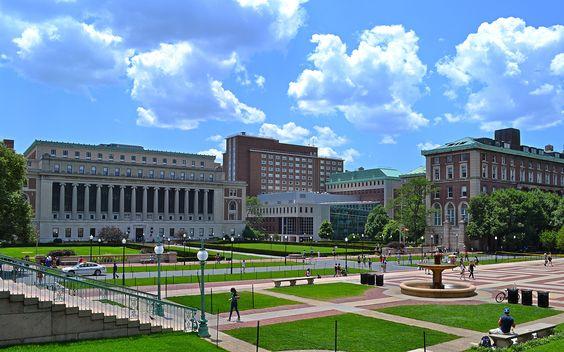 Institutional Plot
Institutional Plot
Image Source: Pinterest
Key Points about Institutional Plots
1. Educational Institutional Plots:
These plots are designated for educational institutions such as schools, colleges, universities, research institutes, training centers, and vocational education facilities. Educational institutional plots support formal education, skill development, academic research, and knowledge dissemination. They may include classrooms, laboratories, libraries, administrative buildings, sports facilities, and student accommodations.
2. Healthcare Institutional Plots:
Designated for healthcare institutions such as hospitals, clinics, medical centers, nursing homes, diagnostic laboratories, and healthcare research facilities. Healthcare institutional plots cater to medical services, patient care, treatment facilities, diagnostic services, medical education, and healthcare research. They may include hospital buildings, outpatient departments, specialty clinics, medical equipment, and support facilities.
3. Cultural and Religious Institutional Plots:
These plots are allocated for cultural institutions, religious centers, temples, mosques, churches, gurudwaras, synagogues, cultural centers, and heritage sites. Cultural and religious institutional plots support religious activities, cultural events, community gatherings, spiritual practices, and preservation of heritage. They may include prayer halls, auditoriums, exhibition spaces, religious shrines, and cultural amenities.
4. Recreational and Sports Institutional Plots:
Designated for recreational institutions, sports complexes, stadiums, parks, playgrounds, fitness centers, swimming pools, and sports training facilities. Recreational and sports institutional plots promote physical fitness, sports activities, leisure pursuits, community engagement, and sports events. They may include sports fields, courts, tracks, spectator stands, pavilions, and recreational amenities.
5. Governmental and Civic Institutional Plots:
These plots are allocated for governmental institutions, administrative offices, public buildings, municipal facilities, civic centers, town halls, government schools, and government hospitals. Governmental and civic institutional plots serve public administration, governance, civic services, public welfare, and government functions. They may include government offices, courts, police stations, fire stations, public libraries, and civic amenities.
6. Non-Profit and Social Institutional Plots:
Designated for non-profit organizations, NGOs, charitable institutions, social service centers, community centers, orphanages, old-age homes, rehabilitation centers, and social welfare organizations. Non-profit and social institutional plots support social causes, humanitarian services, community development, and social welfare programs. They may include facilities for counseling, education, vocational training, and community outreach.
7. Government Schemes and Initiatives:
Institutional plots may benefit from government schemes, incentives, grants, and support programs aimed at promoting education, healthcare, culture, sports, and social welfare. Government initiatives may include land allocations, funding support, infrastructure development, regulatory facilitation, and policy frameworks to encourage institutional development and public service delivery.
Types of Institutional Plots in India
|
Type of Institutional Plot |
Description |
|
Educational Institutional Plots |
Designated for educational institutions including schools (primary, secondary, high schools), colleges (degree, junior, engineering, medical, management), universities (central, state, private, deemed), research institutes, and training centers. |
|
Healthcare Institutional Plots |
Designated for healthcare institutions such as hospitals (general, specialty, multi-specialty, super-specialty), clinics, nursing homes, diagnostic laboratories, and healthcare research institutes focusing on medical care, diagnostics, research, and public health services. |
|
Cultural and Religious Institutional Plots |
Allocated for religious institutions (temples, mosques, churches, gurudwaras), cultural centers (events, exhibitions, performances), heritage sites, museums, and places of worship and cultural significance promoting cultural heritage and religious practices. |
|
Recreational and Sports Institutional Plots |
Cater to sports complexes, stadiums, parks, gardens, fitness centers, gyms, and recreational facilities providing opportunities for sports activities, fitness training, leisure, outdoor recreation, and community engagement. |
|
Governmental and Civic Institutional Plots |
Designated for government offices (administrative, regulatory, public service), courts, judicial buildings, municipal facilities (civic centers, town halls, libraries), and public service institutions supporting governance, legal services, civic amenities, and local governance functions. |
|
Non-Profit and Social Institutional Plots |
Cater to non-profit organizations, NGOs, charitable institutions, community centers, old-age homes, orphanages, and social service centers providing welfare, humanitarian services, advocacy, support programs, and rehabilitation for marginalized and vulnerable populations. |
What is Brownfield Land?
In India, brownfield land refers to previously developed or industrialized land that is potentially contaminated or environmentally impaired due to past industrial or commercial activities.
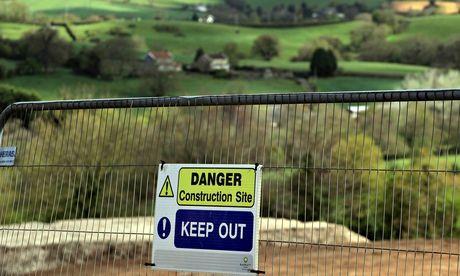 Brownfield Land
Brownfield Land
Image Source: Pinterest
Key Points about Brownfield Land
1. Previous Industrial Use:
Brownfield land typically has a history of industrial, commercial, or other human activities that may have resulted in soil or groundwater contamination. These activities could include manufacturing, chemical processing, waste disposal, storage of hazardous materials, or other industrial processes.
2. Contamination Potential:
Brownfield sites may have pollutants or contaminants such as heavy metals, petroleum products, solvents, pesticides, asbestos, or other chemicals present in the soil, groundwater, or surface water. Contamination levels can vary, and not all brownfield sites are severely polluted, but they require assessment and remediation before redevelopment.
3. Abandoned or Underutilized:
Brownfield sites may be abandoned, vacant, derelict, or underutilized due to environmental concerns, economic factors, regulatory issues, or changes in industrial activities. These sites often represent underutilized assets in urban or industrial areas that have potential for redevelopment and revitalization.
4. Redevelopment Opportunities:
Despite their environmental challenges, brownfield sites offer redevelopment opportunities for sustainable land use, urban renewal, and economic revitalization. Redevelopment of brownfield land can promote infill development, reduce urban sprawl, optimize land use in developed areas, and create mixed-use developments.
5. Regulatory Framework:
In India, brownfield redevelopment is guided by environmental regulations, land use policies, and regulatory frameworks set by central and state governments. The Ministry of Environment, Forest and Climate Change (MoEFCC) and State Pollution Control Boards (SPCBs) oversee environmental clearances, remediation requirements, and compliance with pollution control norms.
6. Assessment and Remediation:
Before redevelopment, brownfield sites undergo environmental assessment, site investigations, and risk assessments to determine the extent of contamination and potential risks to human health and the environment. Remediation measures such as soil remediation, groundwater treatment, containment, or capping may be required to mitigate environmental impacts.
7. Brownfield Redevelopment Initiatives:
Various initiatives and programs promote brownfield redevelopment in India. These include incentives, tax benefits, subsidies, and support mechanisms to encourage private and public sector participation in cleaning up and reusing brownfield sites for sustainable development, affordable housing, commercial projects, or public infrastructure.
8. Public-Private Partnerships (PPPs):
Brownfield redevelopment often involves collaborations between government agencies, private developers, environmental consultants, financial institutions, and community stakeholders. Public-private partnerships (PPPs) play a significant role in addressing environmental challenges, funding remediation efforts, and ensuring socially responsible redevelopment of brownfield land.
What is a Development Property?
In India, a development property refers to land or real estate that is designated or intended for development, construction, or improvement for various purposes such as residential, commercial, industrial, or mixed-use projects.
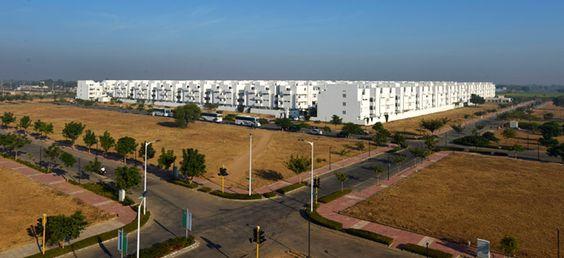 Development Property
Development Property
Image Source: Pinterest
Key Points about Development Properties
1. Land for Construction:
Development properties include vacant land, plots, or parcels that are suitable for construction and development activities. These properties may be located in urban, peri-urban, or rural areas and can vary in size and zoning classifications based on local land use regulations.
2. Residential Development Properties:
These properties are earmarked for residential projects such as housing societies, apartment complexes, townships, villas, or individual residential units. Residential development properties may have approvals and permits for residential construction, infrastructure development, and amenities such as roads, utilities, parks, and recreational facilities.
3. Commercial Development Properties:
These properties are designated for commercial projects such as office buildings, retail outlets, shopping complexes, hotels, restaurants, business parks, and commercial centers. Commercial development properties are strategically located in commercial zones, business districts, or mixed-use areas to attract businesses, customers, and investors.
4. Industrial Development Properties:
These properties are allocated for industrial projects such as manufacturing units, warehouses, industrial parks, logistics centers, and industrial estates. Industrial development properties cater to industries requiring land for production, storage, distribution, and logistical operations.
5. Mixed-Use Development Properties:
These properties allow for mixed-use developments combining residential, commercial, and/or industrial components within a single project. Mixed-use development properties integrate diverse land uses, creating vibrant and self-sustaining communities with a mix of housing, offices, retail spaces, recreational amenities, and public facilities.
6. Land Acquisition and Planning:
Developers, investors, and real estate companies acquire development properties for investment or project development purposes. This may involve land acquisition, land aggregation, land assembly, due diligence, land use approvals, environmental clearances, and project feasibility studies before initiating development activities.
7. Infrastructure and Amenities:
Development properties require infrastructure development such as roads, drainage systems, water supply, electricity connections, sewage facilities, landscaping, and public utilities to support the planned developments. Amenities such as schools, hospitals, shopping centers, recreational spaces, and transportation links enhance the appeal and livability of development projects.
8. Regulatory Compliance:
Development properties must comply with regulatory requirements, building codes, land use regulations, environmental norms, fire safety standards, and other legal frameworks set by municipal authorities, development agencies, and government bodies. Obtaining necessary permits, NOCs (No Objection Certificates), and clearances is crucial for lawful development activities.
9. Real Estate Development Process:
The development of properties in India involves various stages such as land acquisition, project planning, design development, regulatory approvals, construction, marketing, sales, and post-construction services. Real estate developers or development firms manage these processes to deliver completed projects to buyers or investors.
What is a Land?
In India, "land" refers to a tangible and fixed geographical area or surface that includes the earth's surface and everything attached to it, such as soil, minerals, water bodies, vegetation, and structures (if any). Land in India holds significant importance due to its various uses and legal implications.
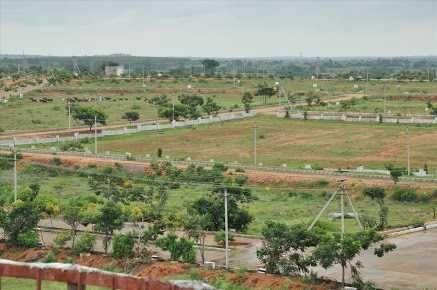 Land
Land
Image Source: Pinterest
Key Points about Land
1. Ownership and Tenure:
Land in India can be privately owned, communally owned, or owned by the government. Private ownership can be in the form of freehold (outright ownership) or leasehold (leased from a landowner or government). Communal land may belong to communities, villages, tribes, or religious institutions. Government-owned land includes public lands, forest lands, and other state-owned properties.
2. Land Use:
|
Land Use |
Description |
|
Residential Land |
Used for housing, residential developments, and related amenities. |
|
Agricultural Land |
Used for farming, cultivation of crops, livestock rearing, and agricultural activities. |
|
Commercial Land |
Used for commercial purposes such as offices, shops, malls, hotels, and business establishments. |
|
Industrial Land |
Used for industrial activities, factories, warehouses, logistics centers, and manufacturing operations. |
|
Institutional Land |
Used for educational institutions, healthcare facilities, religious centers, cultural centers, and government buildings. |
|
Recreational Land |
Used for parks, playgrounds, sports complexes, and recreational facilities. |
|
Mixed-Use Land |
Combined use for residential, commercial, and/or other purposes within a single development. |
3. Legal Framework:
Land ownership and usage in India are governed by various laws, regulations, and legal frameworks such as:
- Land Acquisition Laws: Govern the process of acquiring land for public projects, infrastructure development, and government use. Includes laws like the Right to Fair Compensation and Transparency in Land Acquisition, Rehabilitation, and Resettlement Act, 2013.
- Tenancy Laws: Regulate land leasing, tenancy agreements, and rights of tenants and landowners. Varies by state and may include state-specific laws governing agricultural tenancies.
- Land Use Planning Laws: Regulate land use, zoning, building regulations, environmental norms, and urban development. Includes municipal laws, development control regulations, and master plans developed by planning authorities.
4. Land Records and Titles:
Land ownership and property rights are documented through land records maintained by revenue departments or land registration authorities. Land titles may be registered, and landowners have legal rights to use, transfer, sell, lease, or mortgage their land based on the type of ownership and land tenure.
5. Land Disputes and Resolutions:
Land disputes are common in India due to issues related to land titles, boundaries, encroachments, inheritance, tenancy disputes, and illegal land acquisitions. Dispute resolution mechanisms include civil courts, revenue courts, land tribunals, arbitration, and alternative dispute resolution methods.
6. Development and Investment:
Land in India is a valuable asset for development projects, real estate investments, agricultural activities, industrial ventures, infrastructure projects, and urbanization initiatives. Land development involves processes such as land acquisition, land use change, land development approvals, environmental clearances, and project execution.
7. Environmental Considerations:
Land use and development activities in India must consider environmental sustainability, conservation of natural resources, ecological balance, and compliance with environmental laws and regulations. Environmental impact assessments, green building norms, pollution control measures, and sustainable land management practices are integral to responsible land use.
What are Apartments?
In India, apartments refer to residential units within multi-story buildings or complexes that are designed for housing purposes. Apartments are a popular form of housing in urban and suburban areas, offering a range of amenities and conveniences to residents.
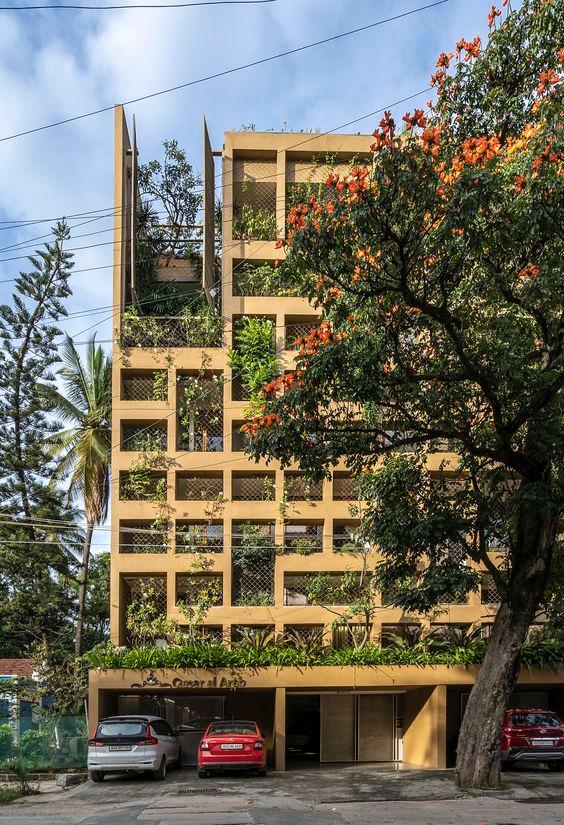 Apartment
Apartment
Image Source: Pinterest
Key Points about Apartments
1. Multi-story Buildings:
Apartments in India are typically located in multi-story buildings or residential complexes that can range from low-rise buildings to high-rise towers. These buildings are designed to accommodate multiple housing units stacked vertically, allowing efficient use of limited urban space.
2. Ownership and Tenure:
Apartments can be owned through various forms of ownership, including:
- Freehold Ownership: Where the apartment owner has full ownership rights over the unit and a proportionate undivided share of common areas in the building or complex.
- Leasehold Ownership: Where the apartment owner holds a lease agreement with the landowner or developer for a specified period, after which the lease may need renewal.
3. Apartment Types:
|
Apartment Type |
Description |
|
Studio Apartments |
Compact units with combined living, sleeping, kitchenette, and bathroom spaces, suitable for individuals or couples. |
|
1BHK (One Bedroom Hall Kitchen) |
Apartments with a separate bedroom, living/dining area, kitchen, and bathroom, ideal for small families or individuals. |
|
2BHK (Two Bedroom Hall Kitchen) |
Apartments with two bedrooms, a living/dining area, kitchen, bathrooms, and possibly a balcony, suitable for small families. |
|
3BHK (Three Bedroom Hall Kitchen) |
Apartments with three bedrooms, a living/dining area, kitchen, bathrooms, and balconies, suitable for medium-sized families. |
|
4BHK (Four Bedroom Hall Kitchen) |
Apartments with four bedrooms, a living/dining area, kitchen, bathrooms, and balconies, suitable for larger families or those needing more space. |
|
5 BHK and Larger |
Apartments with five or more bedrooms, offering spacious living areas, multiple bathrooms, kitchens, balconies, and utility spaces. Suitable for large families or those with specific space requirements. |
4. Common Areas and Facilities:
Apartments typically include common areas and facilities shared by residents, such as:
- Lobbies and Corridors: Entry areas, reception lobbies, and internal corridors connecting different floors and units.
- Elevators/Lifts: Vertical transport systems facilitating access to different floors, especially in high-rise buildings.
- Parking: Designated parking spaces or parking lots for residents' vehicles, often including both covered and open parking options.
- Amenities: Common amenities may include swimming pools, fitness centers/gymnasiums, landscaped gardens, children's play areas, community halls, clubhouses, sports facilities, and security features like CCTV surveillance and gated access.
5. Maintenance and Management:
Apartment complexes in India are managed by resident welfare associations (RWAs), cooperative housing societies, or professional property management companies. These entities oversee maintenance, security, facilities management, and common area upkeep through maintenance charges or fees paid by residents.
6. Legal Framework:
The ownership, sale, lease, and management of apartments in India are governed by laws and regulations such as:
- Real Estate (Regulation and Development) Act, 2016 (RERA): Regulates the real estate sector, promotes transparency, protects buyers' rights, and ensures timely delivery of projects.
- Apartment Ownership Acts: State-specific laws governing apartment ownership, common areas, maintenance responsibilities, bylaws of housing societies, dispute resolution mechanisms, and related matters.
7. Market Trends:
The Indian real estate market offers a diverse range of apartments catering to different budgets, preferences, and locations. Developers and builders offer apartments in various price segments, ranging from affordable housing to luxury apartments with premium amenities and features.
What is a Builder Floor?
In India, a "builder floor" refers to an independent residential unit or apartment that occupies an entire floor within a low-rise building or a smaller multi-story building. These builder floors are typically constructed by individual builders or developers as part of residential projects, and they offer certain distinct features compared to apartments in larger residential complexes.
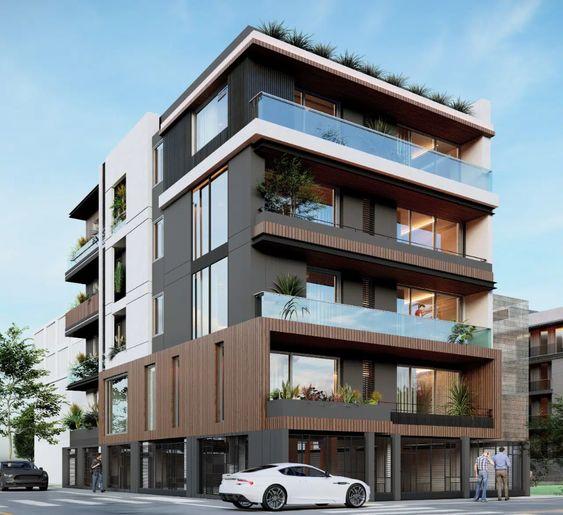 Builder Floor
Builder Floor
Image Source: Pinterest
Key Points about Builder Floors
1. Independent Units:
Builder floors are independent housing units that occupy an entire floor of a building, providing a sense of privacy and exclusivity to the residents. Each floor typically constitutes a single dwelling unit, although larger floors may be divided into multiple units.
2. Low-rise or Smaller Buildings:
Builder floors are commonly found in low-rise buildings with up to four or five floors, although they can also be part of smaller multi-story buildings. Unlike high-rise apartments that are part of larger residential complexes, builder floors are standalone units within comparatively smaller buildings.
3. Customization and Design:
One of the key advantages of builder floors is the ability for customization and personalized design. Buyers often have the option to choose layouts, interiors, finishes, and amenities according to their preferences, subject to the builder's offerings and customization policies.
4. Exclusive Amenities:
While builder floors may not offer the extensive range of amenities found in large residential complexes, they often come with exclusive amenities such as dedicated parking spaces, private terraces or balconies, independent water and electricity connections, and sometimes small gardens or green spaces.
5. Floor Plans:
|
Floor Plan Type |
Description |
|
Single-Floor Units |
An entire floor constitutes a single dwelling unit, providing spacious living areas and privacy. |
|
Duplex Units |
Builder floors designed as duplex units span multiple floors within the building, offering two levels of living space connected by an internal staircase. |
|
Triplex or Penthouse Units |
Some builder floors extend to three or more levels, with the topmost floor designated as a penthouse with exclusive features and panoramic views. |
6. Ownership and Legal Aspects:
Builder floors are sold as independent units with clear ownership titles and legal documentation. Buyers of builder floors have ownership rights over their respective floor/unit, along with a proportionate undivided share of common areas such as staircases, corridors, and shared facilities (if any).
7. Maintenance and Management:
Unlike large residential complexes with dedicated management bodies like resident welfare associations (RWAs) or housing societies, the maintenance and management of builder floors are often the responsibility of individual owners or a smaller association of owners. This includes maintenance of common areas, utilities, security, and other shared aspects of the building.
8. Location and Pricing:
Builder floors are commonly found in established residential neighborhoods, city outskirts, or upcoming areas with land available for development. Pricing of builder floors varies based on factors such as location, size, amenities, construction quality, and market demand.
What is a Villa?
In India, a villa refers to a luxurious and typically standalone residential property that offers spacious living areas, modern amenities, and a higher degree of privacy compared to traditional apartments or homes. Villas are often associated with upscale living and are designed to provide a comfortable and exclusive lifestyle.
 Villa
Villa
Image Source: Pinterest
Key Points about Villas
1. Independent Structure:
A villa is a standalone structure, usually detached from neighboring properties, which distinguishes it from apartments or row houses that share common walls. This independence gives residents more privacy and a sense of exclusivity.
2. Spacious Living Areas:
Villas in India are known for their generous living spaces, including multiple bedrooms, bathrooms, living rooms, dining areas, and sometimes additional rooms such as home offices, libraries, or entertainment rooms. Villas often feature large windows, high ceilings, and open floor plans to enhance natural light and ventilation.
3. Modern Amenities:
Villas are equipped with modern amenities and luxury features that cater to a comfortable lifestyle. These amenities may include private gardens or landscaped areas, swimming pools, outdoor seating or dining areas, gyms, home theaters, smart home automation systems, high-end fixtures, and premium finishes.
4. Exclusive Design and Architecture:
Villas are designed with attention to detail and often showcase unique architectural styles, premium materials, and custom designs. They may include elements such as grand entrances, balconies, terraces, courtyards, verandas, pergolas, and architectural accents that add to their aesthetic appeal.
5. Gated Communities or Enclaves:
Many villas in India are part of gated communities or residential enclaves that offer additional security, common amenities, landscaping, and community services. These communities may have controlled access, perimeter fencing, security personnel, CCTV surveillance, and community maintenance services.
6. Location and Views:
Villas are often located in desirable residential neighborhoods, suburbs, or scenic locations with panoramic views, natural surroundings, or proximity to waterfronts, golf courses, parks, or green spaces. The location of a villa can significantly influence its appeal and value.
7. Ownership and Maintenance:
Villa ownership can be freehold, where the owner has complete ownership rights over the property and land, or leasehold, where the property is leased for a specific period. Owners of villas are responsible for the maintenance and upkeep of their properties, including landscaping, repairs, and servicing of amenities.
8. Market Segment:
Villas cater to a niche market segment of affluent buyers, investors, and individuals seeking premium residential properties with luxury features, exclusivity, and personalized living spaces. They are often considered as high-end real estate investments or lifestyle choices for those who value privacy, space, and upscale amenities.
9. Legal and Regulatory Compliance:
Villa developments in India must comply with local building codes, zoning regulations, environmental norms, land use permissions, and real estate laws. Developers of villa projects need approvals and clearances from relevant authorities for construction, infrastructure, and amenities.
What is Commercial Land?
Commercial land in India refers to land parcels or properties that are designated for commercial activities, business operations, and non-residential uses. These lands are specifically zoned for commercial purposes by local planning authorities and are distinct from residential, agricultural, or industrial lands.
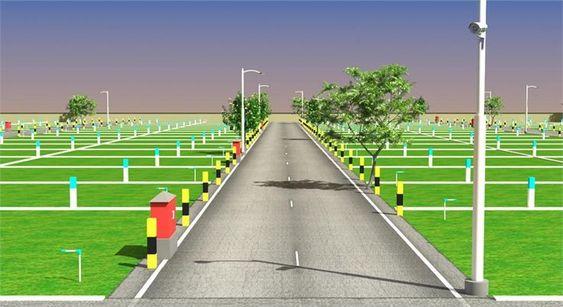 Commercial Land
Commercial Land
Image Source: Pinterest
Key Points about Commercial Lands
1. Purpose and Usage:
|
Commercial Land Use |
Description |
|
Retail Outlets |
Land used for shops, stores, shopping malls, supermarkets, convenience stores, and retail establishments selling goods and services to consumers. |
|
Office Spaces |
Land designated for office buildings, corporate complexes, business parks, coworking spaces, and professional offices for conducting administrative, managerial, and business activities. |
|
Hotels and Hospitality |
Land used for hotels, motels, resorts, guesthouses, lodges, and hospitality establishments offering accommodation, dining, and related services to travelers and guests. |
|
Restaurants and Food Outlets |
Land for restaurants, cafes, eateries, food courts, bakeries, and food service businesses catering to dining and culinary experiences. |
|
Commercial Services |
Land for banks, financial institutions, insurance companies, professional services, commercial centers, showrooms, and service-based businesses. |
2. Location and Accessibility:
Commercial land is often located in strategic areas within cities, townships, commercial zones, business districts, or along major transportation corridors. Proximity to markets, transportation hubs, residential areas, commercial centers, and population centers enhances accessibility and visibility for businesses.
3. Zoning and Regulations:
Commercial land use is governed by local zoning laws, land use regulations, master plans, and building codes set by municipal corporations, development authorities, and planning agencies. These regulations specify permissible commercial activities, building heights, setbacks, parking requirements, signage rules, and environmental norms.
4. Infrastructure and Utilities:
Commercial land requires access to essential infrastructure and utilities to support commercial operations, such as:
- Roads and Transportation: Accessible roadways, highways, and public transportation networks for customers, employees, and goods movement.
- Utilities: Adequate water supply, electricity connections, sewage systems, drainage facilities, telecommunications, and internet connectivity.
- Parking Facilities: Designated parking areas, parking lots, or parking structures to accommodate vehicles of customers, employees, and visitors.
5. Market Demand and Investment:
Commercial land values are influenced by market demand, economic factors, location advantages, infrastructure development, and investment potential. Prime commercial locations with high footfall, visibility, and business opportunities command premium prices and attract investors, developers, and businesses.
6. Mixed-Use Developments:
Some commercial lands may be part of mixed-use developments combining commercial, residential, and/or other land uses within a single project. Mixed-use developments integrate diverse uses, creating vibrant urban environments with a mix of housing, retail, offices, entertainment, and public spaces.
7. Legal Considerations:
Commercial land transactions involve legal aspects such as land titles, ownership documentation, land acquisition, land use change permissions, environmental clearances, building approvals, lease agreements, and compliance with tax regulations and commercial laws.
Conclusion
To conclude, India's housing market offers a rich tapestry of options catering to diverse preferences and budgets. Whether one seeks the independence and customization of an individual plot, the convenience and amenities of high-rise apartments, the luxury of villa living, or affordable housing solutions, there's something for everyone. This diversity reflects the dynamic nature of India's real estate sector, making it accessible and appealing to a wide range of homebuyers and investors alike. As the market continues to evolve, it will likely continue to innovate and expand its offerings, further enriching the housing landscape in the country.
explore further
Latest from Home Buying Tips
More from Recommendations
Resources
Dwello, for every home buyer, is a way to go from 'I feel' to 'I know', at no extra cost.



